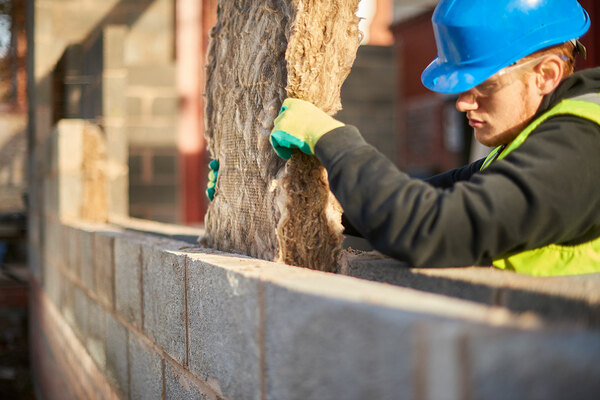You are viewing 1 of your 1 free articles

How can social landlords walk the sustainability tightrope?
The push to decarbonise by 2050 has major implications for the social housing sector. But the path through involves proactive stakeholder engagement, writes Annabel Gray
On 27 June 2019, the United Kingdom became the first major economy in the world to pass a law to bring its greenhouse gas emissions down to net zero by 2050.
The Committee on Climate Change reported last year that achieving this target will not be possible “without the near complete elimination of greenhouse gas emissions from UK buildings”.
However, a survey undertaken by the Electrical Contractors’ Association revealed that of 214 local authorities, 43% of them did not measure the energy they use in council-owned buildings or know how much carbon they produce.
Furthermore, 47% of councils said in this survey that they do not have a strategy in place to reduce the carbon emissions from buildings. Funding cuts, a lack of national standards on climate action and the wide variety of service provision all present significant challenges to housing providers’ reduction of their carbon emissions. But this is no longer a choice, it is a necessity.
Assessing which carbon efficient approaches are adopted comes with a trade-off between several competing and technical challenges.
At the core is stakeholder engagement, and proactive stakeholder engagement is key. The voice of the resident, the managing agent and or maintenance provider must not be forgotten. When designing carbon-zero homes, housing providers have three opportunities to implement this change: during the design stage, the construction stage and in use.
Proactive stakeholder engagement should begin at the design stage, asking residents what their drivers are, and continue throughout the occupation of the homes to ensure long-term behavioural change in maintenance and use.
Altair have been working closely with Haringey Council’s housing delivery team, supporting their new homes programme. The council has an ambition to deliver carbon-zero homes moving forward and 1,000 homes by 2022. Like with any schemes there are significant competing challenges, but the team are forward thinking on how best to strike the balance to avoid compromise on the carbon agenda.
At a tricky infill site scheme (development known as Scales Road), located in the east of the borough, the design team worked closely with residents, from the point a red line boundary for the scheme was agreed, to find out how they would like the land to be used.
They have since closely engaged with them on the designs as they developed. The asset management team have been closely involved in design team meetings and design stage reviews as well.
This collaborative approach has allowed their feedback to be incorporated into elements such as the fabric-first approach through to the location and specification of the air source heat pumps to ensure ease of maintenance. As this scheme progresses to onsite delivery and handover, the close relationship with residents and other key stakeholders will uphold the sustainable maintenance and occupation of the new homes.
This proactive stakeholder engagement will ensure the next generation of homes are fit for purpose and future proofed for climate change.
So in order ensure a 360° view of all key stakeholders is collated and considered, below are key considerations for housing providers to note:
- Ensure adequate time allowances are built into the design and build programme to allow for thorough engagement of stakeholders including tenants. In fact, it is recommended that there is standalone programme for resident engagement to capture all the complexities and this can overlay onto the wider scheme programme.
- A bottom-up approach when designing new homes is taken. Stakeholders who understand the local area, how the space will be occupied, used and maintained will provide answers to most questions and more often than not can suggest a simple fix to a problem.
- Key internal stakeholders are present during design team meetings and design stage reviews to ensure the voices of specialists are heard on the following topics: fire, mechanical and electrical; cost, energy and planning; and tenancy management. Competing for these experts time can be tricky, therefore energy might be required to ensure their attendance at these meetings. It is essential that time is spent to properly obtain their buy in.
- The tone of meetings is positive and proactive. Starting engagement in early stages enables more open questions to be asked, thereby providing a genuine opportunity for stakeholders to have their say and influence. If engagement is undertaken too late, stakeholder’s views can rarely be properly considered and implemented and can be seen as a box-ticking exercise.
- Investment of resources to provide training for residents and the maintenance teams on how specialist equipment operates, should be managed and used to drive the best results from emissions and cost perspectives. It is critical that these stakeholders fully understand the benefits of green technology equipment.
The housing sector has a big part to play in driving down UK carbon emissions to net zero by 2050.
With ambitious new homes targets, housing providers will need to successfully ‘walk the tightrope’ to achieve a balance between the five competing challenges so they can play their part. To do so, proactive stakeholder engagement must underpin this overall process.
This can be an intimating and challenging hurdle for housing providers to overcome. As a starting point, housing providers should look to review, and if required revise, their development strategies and implementation plans to ensure these core principles have been embedded.
Annabel Gray, principal consultant, Altair
Sign up for our daily newsletter
Already have an account? Click here to manage your newsletters













